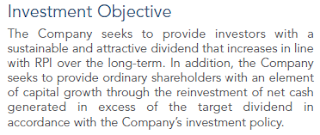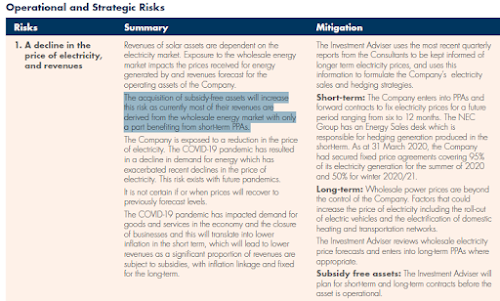It's traditional towards the end of a year, to look back at what has happened over the past 12 months. So I thought I would take a look at some of the portfolio and how they had faired against similar businesses during what has been a chaotic 2020. In particular I wondered whether some of my larger holdings had become or more less expensive over the year.
But then I figured 2020 has been such an exceptional year, that whatever has happened, it's likely to remain an outlier. Unless we are about to see economies shut down, in whole or in part, over the next few years, 2020 is going to remain an oddity. So I did a complete reversal and started picking over a few stats that specifically excluded 2020.
I keep track of the purchase price of any shares bought, and also a range of financial measures, so that I have a rough idea if in future I might be picking up the shares at a bargain price. Of course cheap vs. expensive is quite a complicated notion when it comes to the stock market, as there are any number of ways to describe this.
I thought I'd use a few metrics that were relatively easy to understand and see how a range of companies had performed over the 5 years prior to COVID-19, December 2014 - December 2019, and included of a few of the portfolio - Unilever, Glaxosmithkline and Computacenter.
The metrics were:
- Share price
- Dividend growth
- Net profit
- Basic earnings per share
- Free cash flow
And a couple of ratios through which to view price:
- Price / Earnings (PE)
- Price / Free Cash Flow (PFCF)
It's a pretty high level and incomplete set of information, but looking at the growth of a range of those measures for the 5 years leading up to COVID-19's arrival is interesting. I think I might build this into my usual review of businesses going forward as it has provoked a few neat questions. Anyway, some thoughts below
Unilever
Share price outpacing profits and led to the PE increasingly rapidly. But, free cash flow has been advancing faster that the share price. So investors are being asked to pay more for Unilever's profits, but less for their cash...
The PE is rising at the same rate as dividends – I wonder if Unilever is cementing it's place as a Bond proxy in a world of low interest rates?
Unilever isn't obviously more expensive that it was a few years ago - profits and cash are not rising at the same rate, so depending what you prefer paying for it can be viewed as more expensive...or cheaper.
Diageo
Share price and profits rising at a fairly consistent pace. Dividends a little slower, but still faster than inflation. But the FCF is the really noticeable thing here, moving at a fair clip.
As a result of the consistent growth, the PE, whilst expanding, has increased slowly (at just above the target of many central bank's rate of inflation). But the PFCF has declined considerably thanks to the rate at which free cash flow has advanced.
Diageo is been a company I've prevaricated over for a while, it's a big, steady consumer goods business, which I like. But I've wondered whether people are going to simply be more health conscious and booze less going forward. Maybe it needs a closer look.
Glaxosmithkline
The share price has been rising slowly, just above inflation, dividends flat, but profits and FCF have been rising much more quickly. As a result the above price ratios have both been decreasing at similar rates.
Despite the profit and cash measures looking more attractive, there have been more sellers than buyers. So presumably the above doesn't tell enough of the story. Given the pharmaceutical side of Glaxo, maybe the business is selling old products about to fall off a patent cliff. In other words, investors don't see the business creating a pipeline for growth and hence it is less attractive.
So expensive or cheap? Here the trade of between price and value seems very interesting and would need a deeper look into the reasons why investors were not impressed.
Another Big Pharma business, who's numbers above are almost doing the opposite of Glaxo. The share price has been rising fast, but dividends, and profits were flat. We can also see that FCF was falling fast.
We can see that with the numerators growing and denominators shrinking the PE has expanded, and PFCF has exploded.
Investors are willing to pay more now that a few years ago to own Astrazeneca. Does it have great growth prospects? Maybe it's been pushing all that profit and cash back into the business and is about to rocket. Maybe it has a pipeline of amazing products that are going to push those profits and that cash skywards? I haven't looked, but even without rummaging under the bonnet it's starting to look pricey to me...
Computacenter
Here the share price, dividends, profits and FCF are all marvellously consistent. And pointing upwards.
So despite the share price bouncing up, the PE and PFCF have hardly moved. Everything is moving in unison.
I invested in Computacenter because they were a long standing supplier for my employer, and always did a good job. Nothing flash, just got the job done. Much like these numbers. My guess is that the market views them as fairly priced, which is why the share price has moved in tandem with the underlying performance of the business.
The share price for EMIS is growing just above it's growth of FCF, but profits are flat.
For the dividend hunters, things might look tempting as this is increasing at 10%+ per year. It could potentially continue for a while if it continues to generate cash. But the rate of increase of the dividend is double the growth of their cash, so sooner or later it's going to catch up.
Given the flat profits, and increasing price it is now more expensive that it was. Maybe it's those dividend hunters who are willing to pay up to own a consistent dividend? It's difficult to get excited though when a business can't grow it's profits, perhaps given that EMIS is a supplier to the NHS it simply has limited pricing power.
Conclusion









